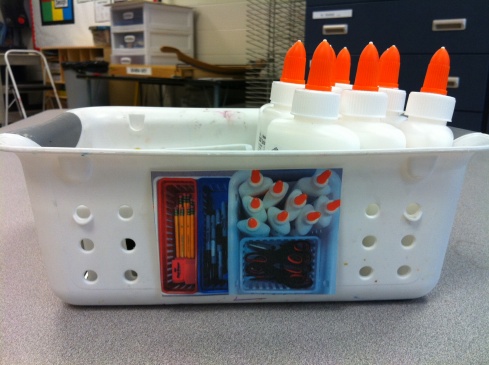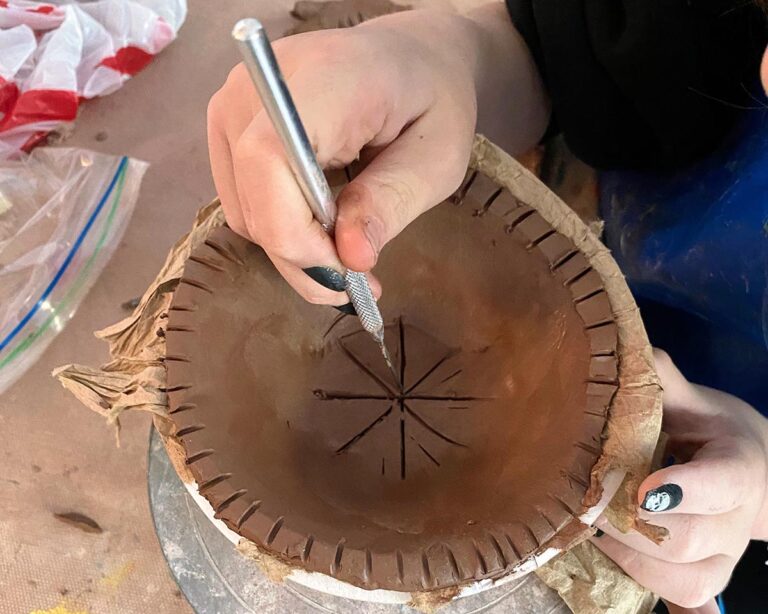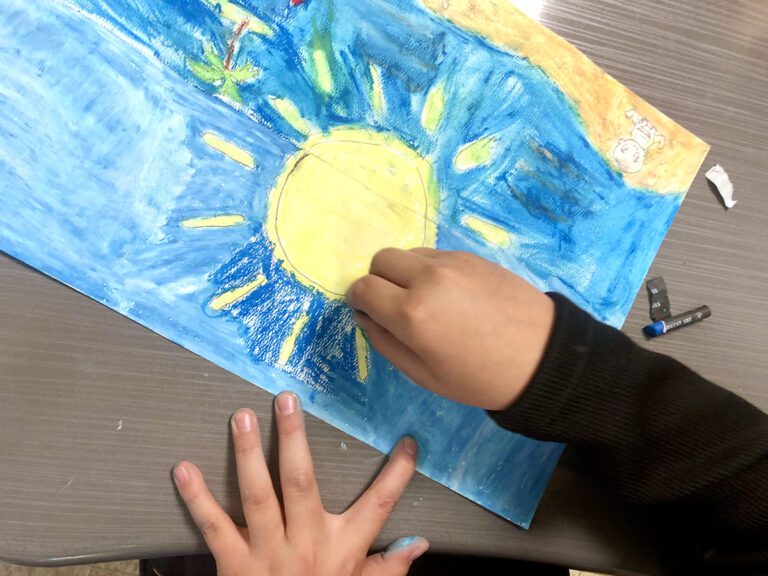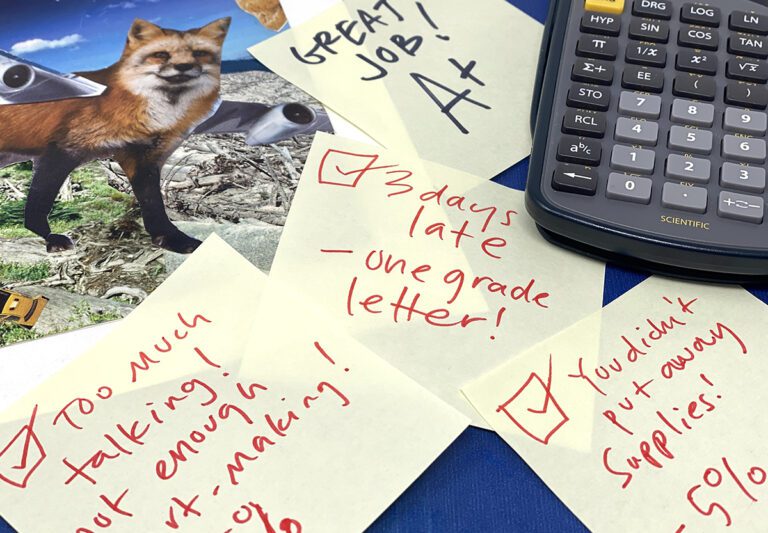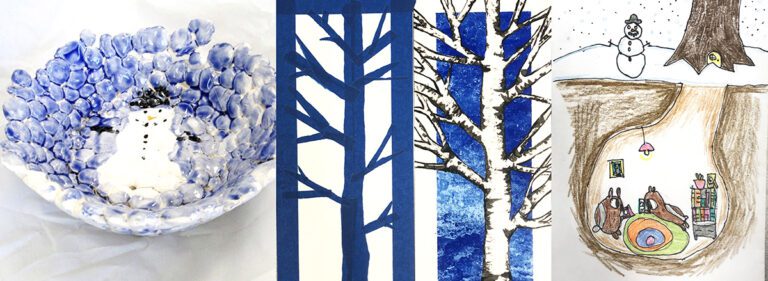We all have different methods for managing sticky situations in the art room. Today I’m sharing my tips for dealing with glue.
Let’s face it; glue bottles are not a fun supply to manage. In fact, I admit that I sometimes pawn off the job to my volunteer. (Sorry. Lois!) Occasionally, I just crack open new bottles instead of refilling old ones. But, on the whole, I do prefer to refill them. It’s much more cost-effective and better for the environment.
(If you loathe the processes, try stocking during the back-to-school when glue bottles are super cheap, and you should be able to find enough to last all year. Or, ask classroom teachers to donate their half-full bottles at the end of the year so you can use them up in the art room.)
I use all of the methods I mentioned to make glue work for me. It all depends on my time, level of frustration, and the projects we are doing at the time.
The method I use most often, however, is refilling bottles with a glue pump.
Elmer’s sells gallon jugs with a pump that goes on top. This is my favorite setup. If you haven’t tried it, you will love it! You can find the pump in the glue section of any art catalog. It’s inexpensive and makes filling glue bottles so much easier. Simply squeeze down (like a ketchup dispenser at a fast food restaurant), and a few squirts will fill the bottle.
I put the gallon jug right in the sink as I fill, so all drips go into the sink and not on my counter. I soak the lids in warm soapy water while I am doing this to loosen up the gunk.
To encourage students to use less glue, I do two things:
1. Use a chant.
In my room, I use the chant “A dot, dot, dot is a lot, lot, lot!” I also make sure to model what to do and what NOT to do when using glue. Then, I make sure to give practice time.
I can’t stress the importance of non-examples enough. Making a big show about a river of glue or a kid who just keeps squeezing and squeezing is a great way to get students to visualize what they should and should not be doing.
2. Keep a few “Tap N Glue” bottles on hand.
If a kid is squeezing too much, and I know it’s not a fine motor issue (i.e. they are just being careless) I make them use a “Tap N Glue” bottle. These types of bottles only let out a small dot of glue when you push down. These sometimes work well for really young kids as well. I have a love-hate relationship with these as they work well, but you have to be ruthless about cleaning the tips. They do clog easily! Some teachers love them, and others hate them. You can always buy a few and see what you think!
But, no matter how well you clean things, it’s inevitable that your glue bottles will clog. Here’s how I handle that situation.
When a student approaches me in the middle of class to tell me their glue doesn’t work, I never try and unclog it on the spot. It’s maddening to sit there with 5 others kids who need my help and try to stick a little paper clip into a glue bottle. For this reason, I have a few backup glue bottles. I simply give the kid a new bottle and set the clogged bottle on the counter to deal with later.
In addition, I try and prevent clogs as much as possible. One way I do this is by enlisting the help of students. I send a kid around with a damp rag at the end of a gluey class period. This student’s job is to close the caps and wipe extra glue off the lids. This extra step makes all the difference in stopping bottles from clogging in the first place!
Finally, don’t be afraid to throw away gunky old bottles. You can’t save them all. Remember, time is money!
I’m pretty sure I don’t even need to prompt you to share your drippy dilemmas and sticky solutions. Tell me about glue and link up any blog posts you have done on the topic, too, in the comments section below.
P.S. This is not a sponsored post. I just really like these products!
Magazine articles and podcasts are opinions of professional education contributors and do not necessarily represent the position of the Art of Education University (AOEU) or its academic offerings. Contributors use terms in the way they are most often talked about in the scope of their educational experiences.
